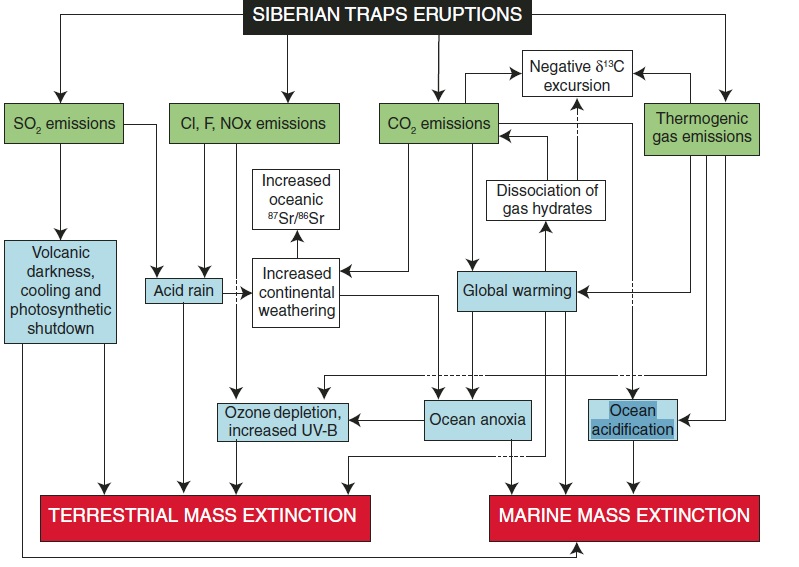
Ichthyosaurus figure at Crystal Palace. From Wikimedia Commons
Ichthyosaurs were iconic marine reptiles that roamed the Mesozoic oceans for some 160 million years. They were characterized by an elongated body, a relatively small head, a long snout, flipper shaped limbs, and dolphin-like tail flukes. Recent studies indicates that they form the clade Ichthyosauromorpha with Hupehsuchia, a group of Early Triassic marine reptiles that inhabited the South of China. The clade arose after the devastation of the end-Permian mass extinction event (EPME, ~252 Ma). Although, there is a wide anatomical gap between Ichthyosauriformes and the Hupehsuchia. A new study from the Uppsala University and the University of Oslo with new ichthyopterygian material recoverd from the Arctic island of Spitsbergen recalibrates the time and origin of this clade.

Computed tomography image and cross-section showing internal bone structure of vertebrae from
PMO 245.975. Image credit: Øyvind Hammer and Jørn Hurum
The fossil remains designated as PMO 245.975 includes 11 articulated vertebral centra, 15 indeterminate bone fragments, limb and/or limb girdle elements. The centra of PMO 245.975 are comparable with vertebrae from ‘middle-sized’ ichthyopterygian skeletons. Aditionally, their internal organization is also entirely cancellous with a dense circumferentially oriented trabecular network (1). Those features indicates fast growth, elevated metabolism and a fully oceanic lifestyle, evidencing that the earliest ichthyopterygian ancestors must have rapidly adapted as oceanic apex predators.
The new materials were initially recovered in 2014 in the Lower Triassic Sassendalen Group strata in Flowerdalen, Svalbard, Norway. and predate the late Smithian crisis (LSC, ∼249.6 Ma). The LSC is characterized by successive global biotic and environmental changes, including a dramatic positive carbon isotopic excursion, oceanic anoxia and a cooling event. This crisis is one of the most severe known for some nekto-pelagic organisms such as ammonoids.
References:
Kear, B. P., Engelschiøn, V. S., Hammer, Ø., Roberts, A. J., & Hurum, J. H. (2023). Earliest Triassic ichthyosaur fossils push back oceanic reptile origins. Current Biology: CB, 33(5), R178–R179. https://doi.org/10.1016/j.cub.2022.12.053 (1)
Nakajima, Y., Shigeta, Y., Houssaye, A., Zakharov, Y. D., Popov, A. M., & Sander, P. M. (2022). Early Triassic ichthyopterygian fossils from the Russian Far East. Scientific Reports, 12(1), 5546. https://www.nature.com/articles/s41598-022-09481-6
Motani, R., Jiang, D. Y., Tintori, A., Ji, C., & Huang, J. D. (2017). Pre-versus post-mass extinction divergence of Mesozoic marine reptiles dictated by time-scale dependence of evolutionary rates. Proceedings of the Royal Society B: Biological Sciences, 284(1854), 20170241. https://royalsocietypublishing.org/doi/full/10.1098/rspb.2017.0241
Thorne, P. M., Ruta, M., & Benton, M. J. (2011). Resetting the evolution of marine reptiles at the Triassic-Jurassic boundary. Proceedings of the National Academy of Sciences, 108(20), 8339-8344. https://doi.org/10.1073/pnas.1018959108


